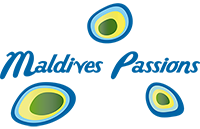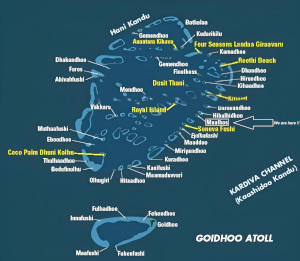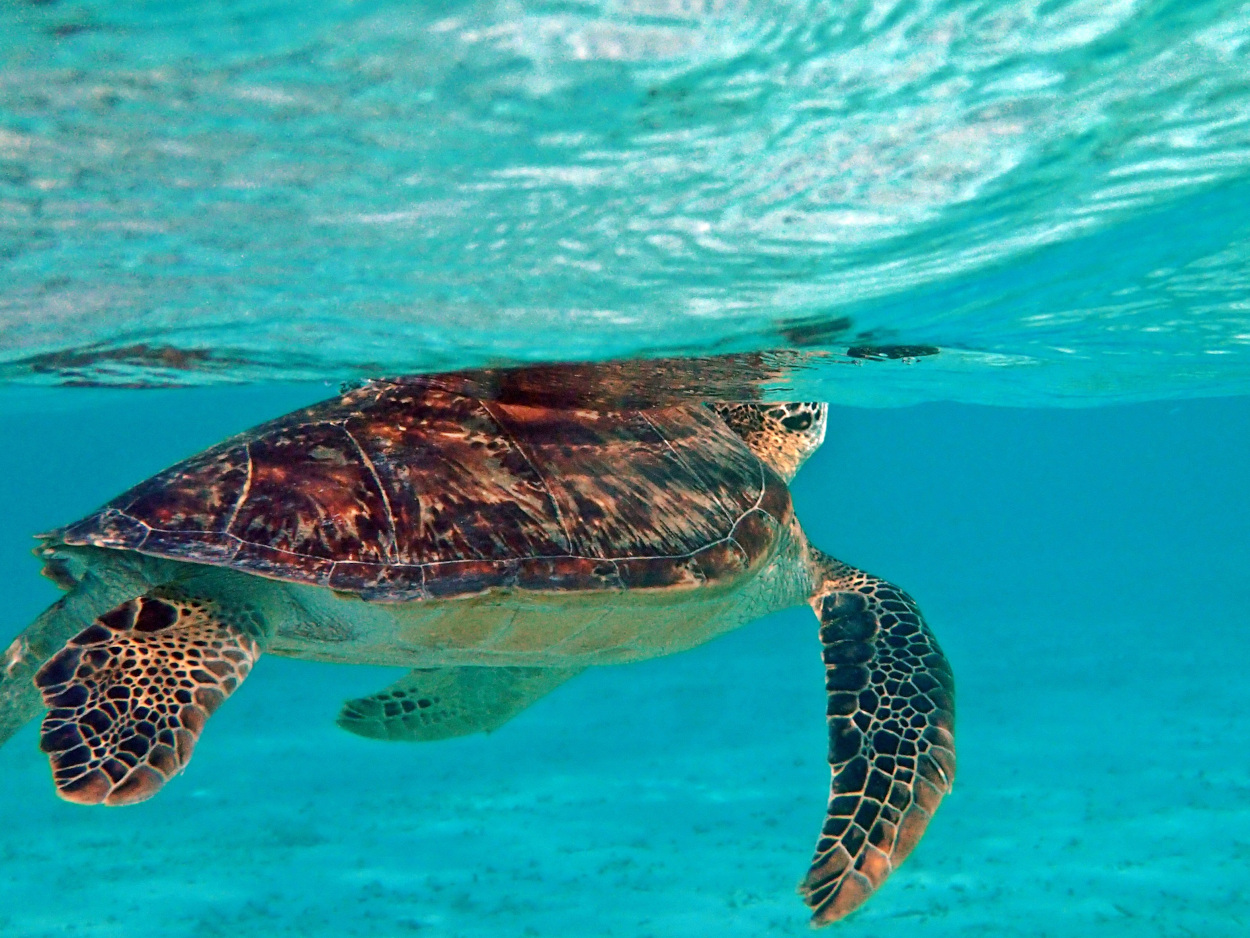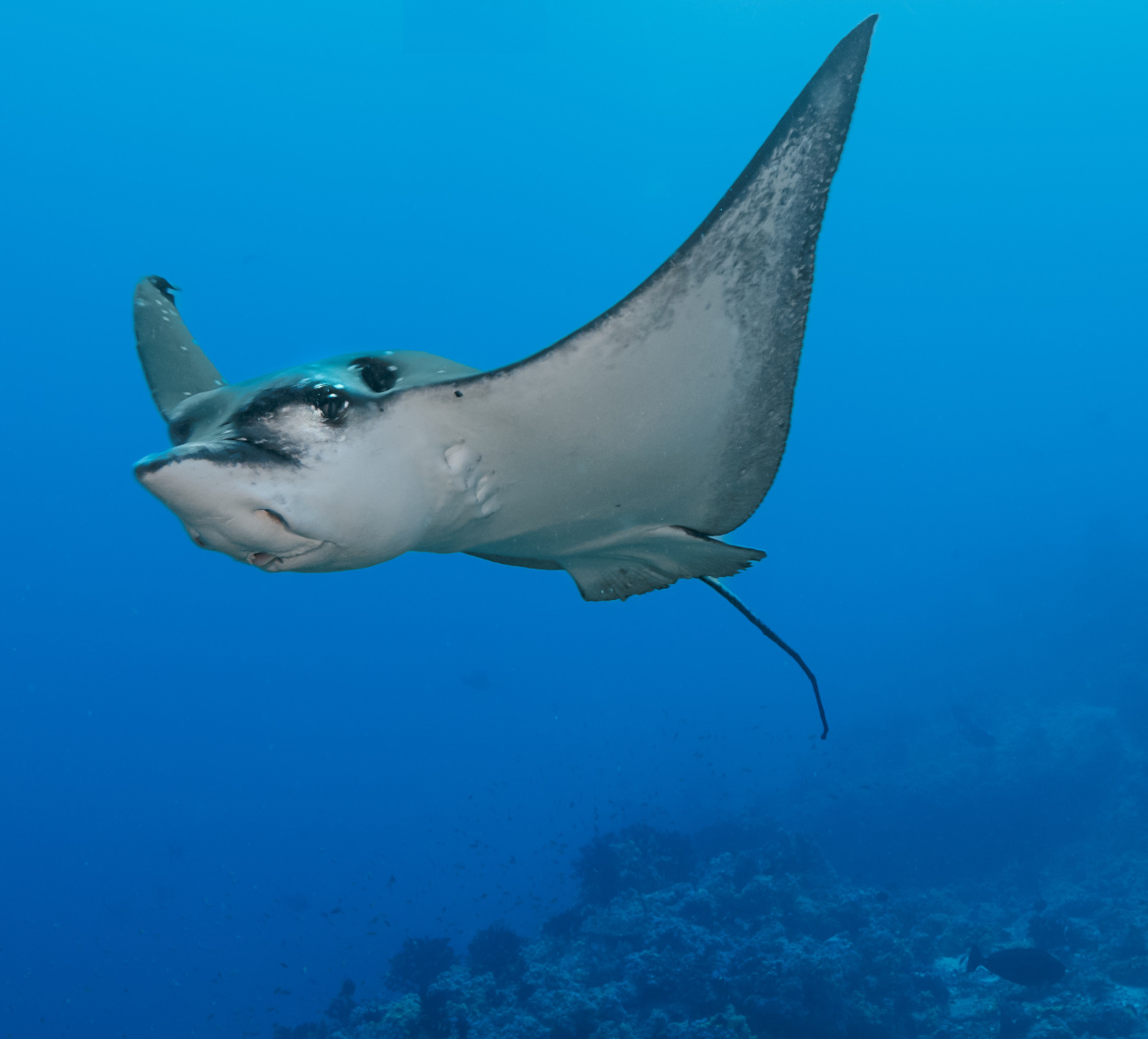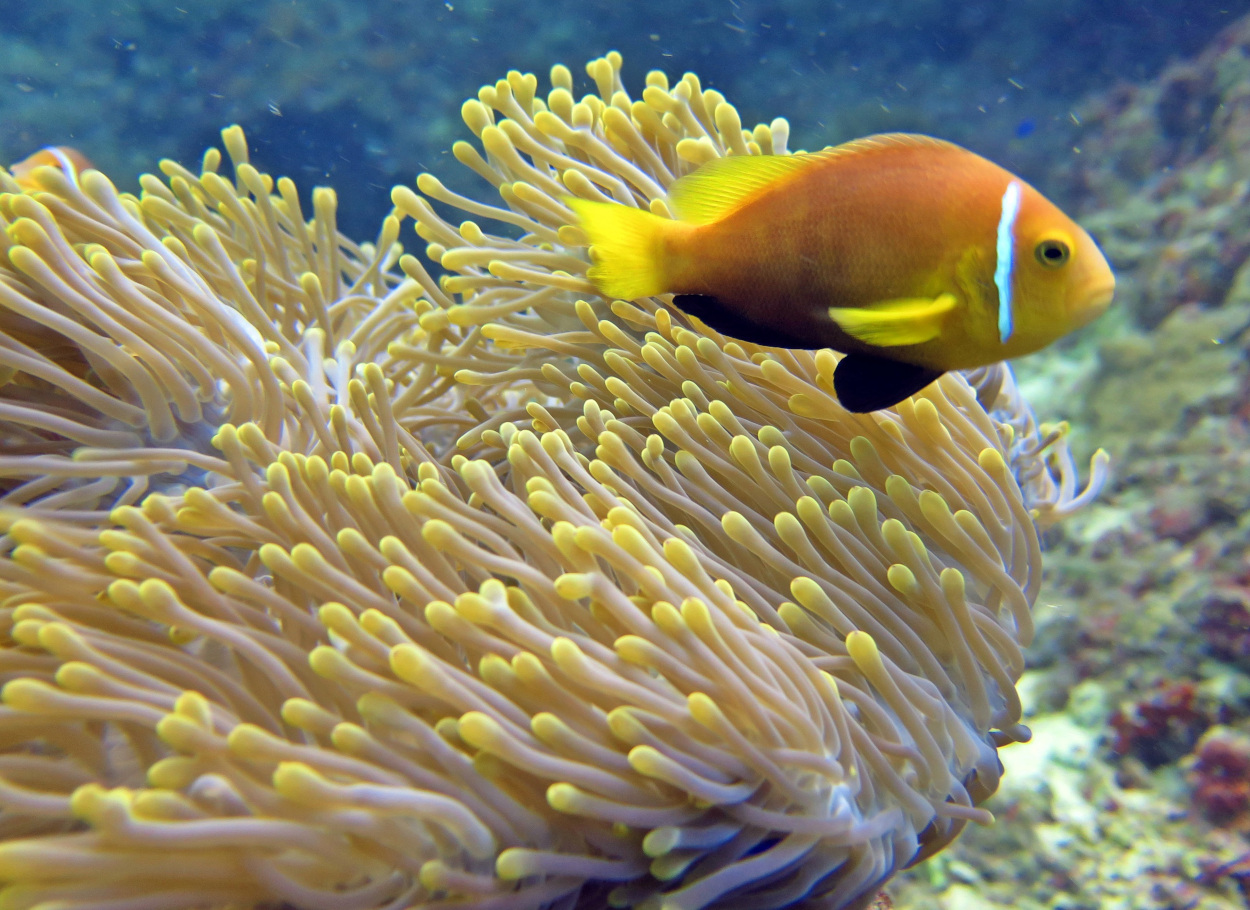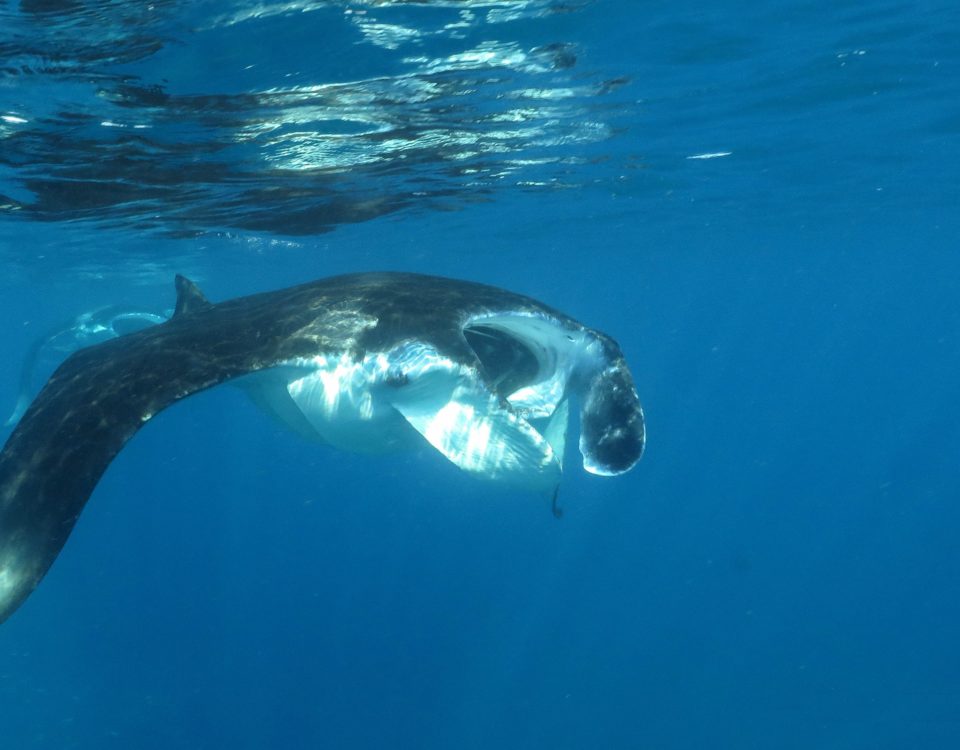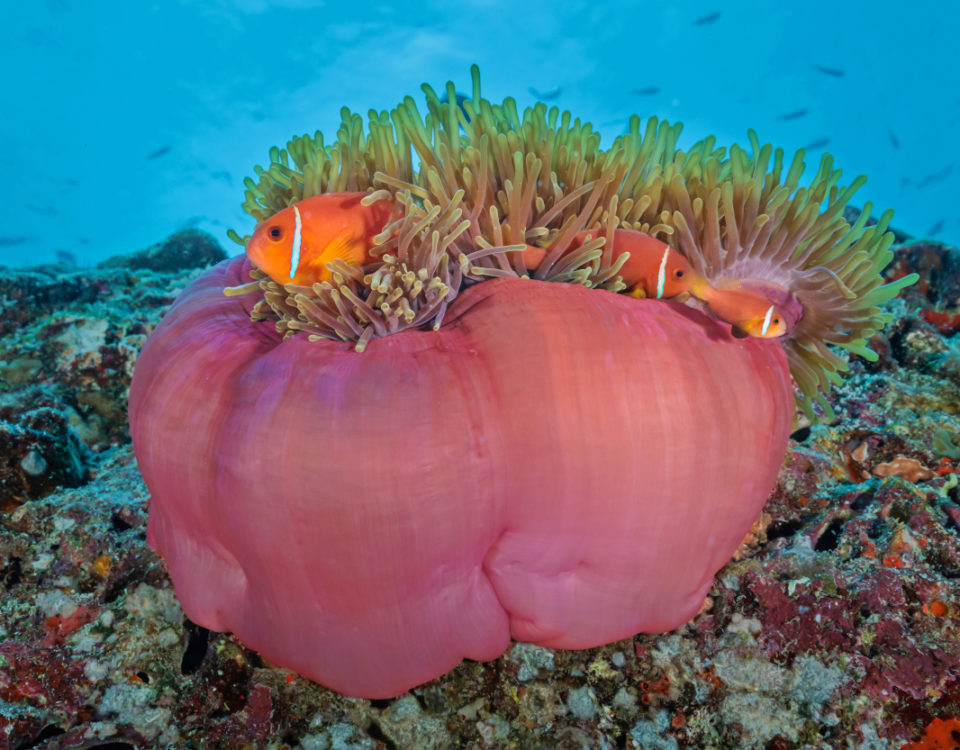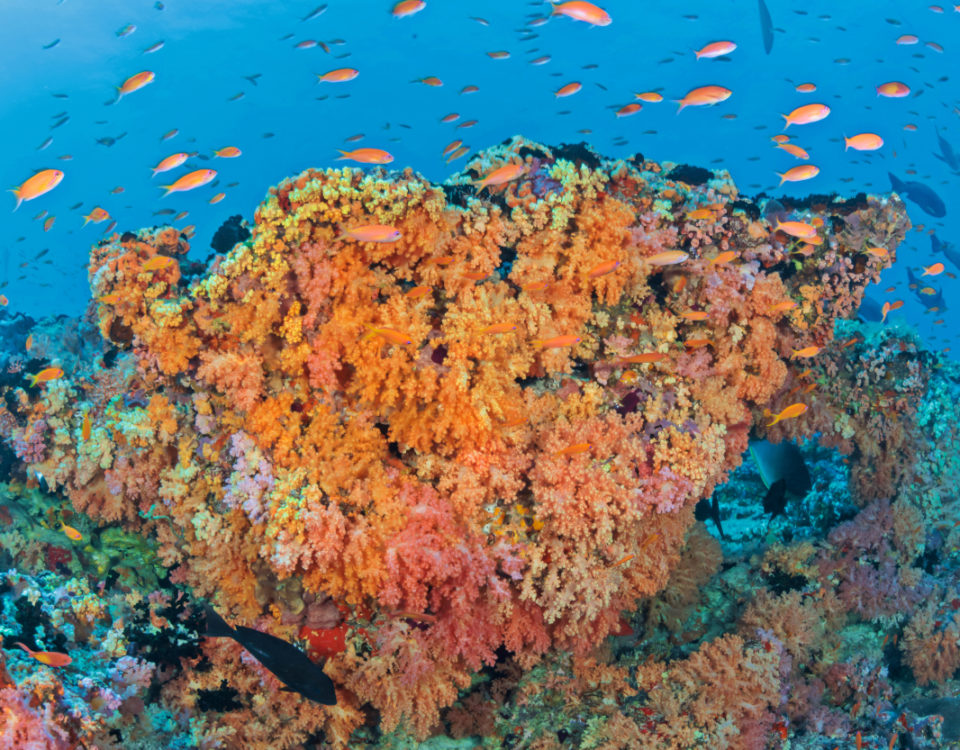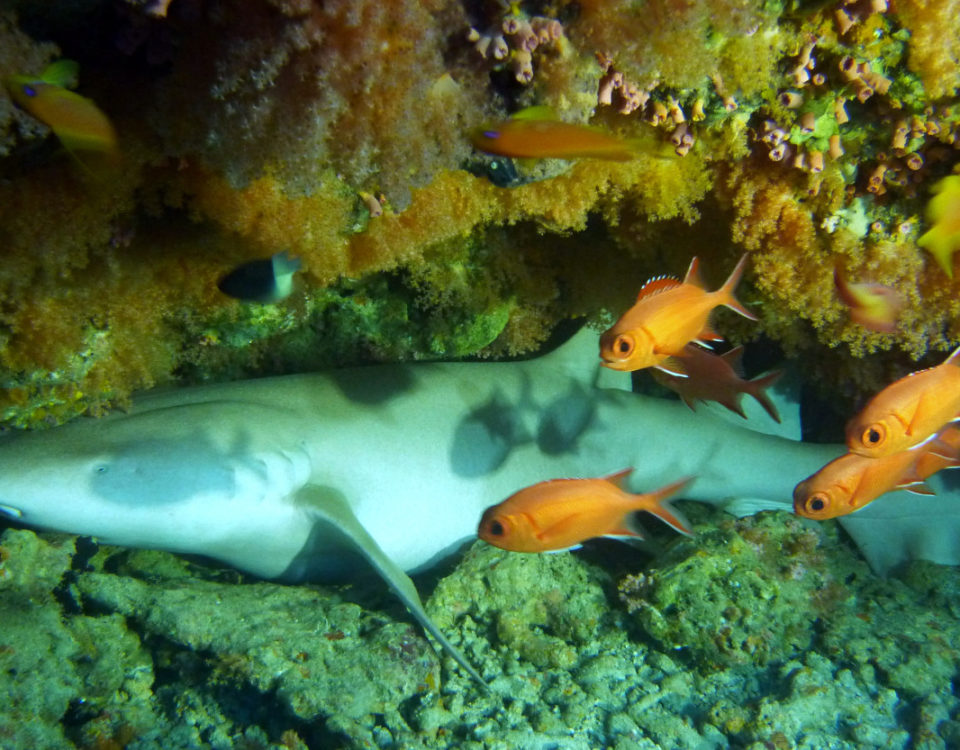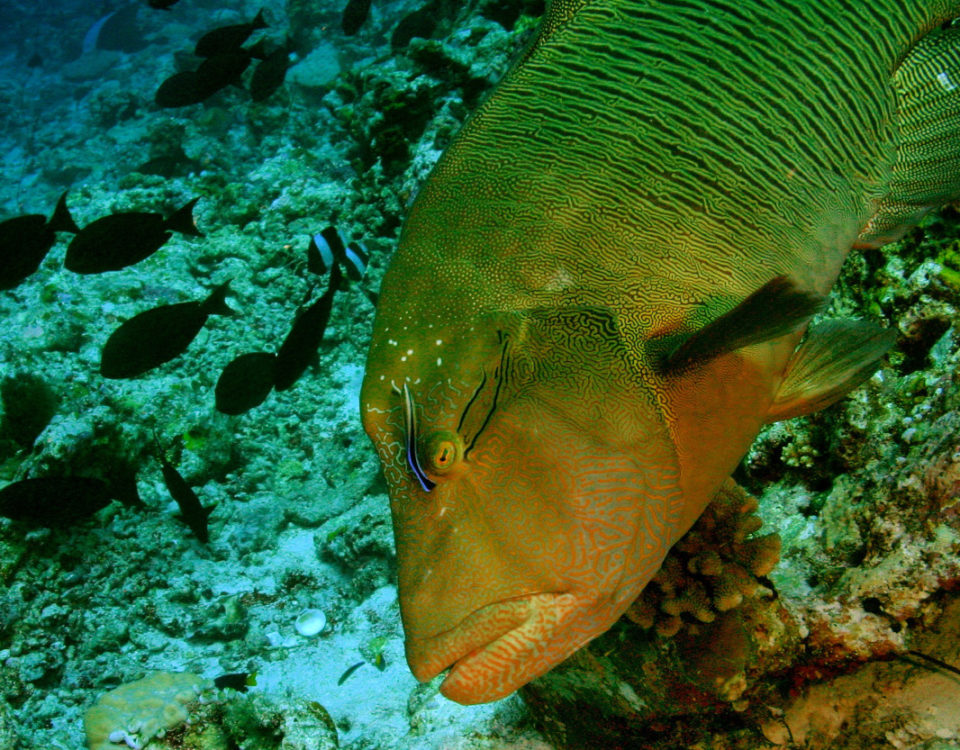Baa Atoll is a UNESCO Biosphere Reserve and one of the Maldives' most exceptional diving destinations. Home to over 1,200 species of reef fish and 250 types of coral, it boasts the richest marine biodiversity in the Indian Ocean.
With stunning coral reefs, submerged pinnacles, overhangs, and swim-throughs cutting into the side of the reef, the atoll offers diverse underwater experiences for both beginners and advanced divers.
Baa Atoll’s waters are teeming with life, from vibrant reef fish like snappers, butterflyfish, parrotfish, and angelfish to larger pelagics such as tunas, napoleons, barracudas, reef sharks, and eagle rays. The reefs are adorned with whip corals, sponges, black coral, large sea fans, and colorful zoanthids, alongside a variety of hard corals, including table and mushroom corals, as well as striking pendulous soft corals. Green sea turtles and Hawksbill turtles are also a common sight, adding to the rich marine diversity.
There are about 35 dive sites around Maalhos, from beginner friendly to advanced level only depending on conditions, all within a 45 mins maximum reach by dhoni (traditional Maldivian boat).
Baa Atoll UNESCO Biosphere Reserve, is among the most extraordinary atolls in the world.
Its crown jewel, Hanifaru Bay, is a protected marine sanctuary where manta rays gather in spectacular numbers during the peak season from May to November, offering an exceptional snorkeling and diving experience.
Best Time to Visit
Diving in Baa Atoll is excellent year-round, with each season offering unique conditions.
The highlight of the season is Manta Ray season (May to November), when snorkelers and divers have the rare opportunity to witness thriving manta aggregations, particularly in Hanifaru Bay.
• Reef passes
• Thilas
Outside reefs:
From the surface, the reef slopes down gently to 5-10 meters, then drops off (more or less vertically) in a long wall down to 30m... or all the way to the ocean floor !! Made mostly of hard corals, you can find the whole array of tropical fish (surgeonfish, parrotfish, groupers, clown fish, moray eels, etc...) along with turtles.
Passing by in the “blue” (the open ocean) you will be able to observe eagle rays, manta rays, tunas, jackfish, sharks, and if you are lucky even sailfish & dolphins. Current will generally be slow or moderate, perfect for an easy drift dive... ...
Reef Passes:
This is where the ocean and the lagoon meets … it's the “doorway” to the atoll, so expect a lot of action and some medium to strong current !!
At the entrance of the pass, you will find a “step” around 30 m (sometimes less) where pelagics congregates with the incoming current: plenty of sharks, rays, tunas, jacks, etc...
Once inside the pass, you just drift along the wall all the way to the inside of the atoll... Here you will find hard & soft corals, turtles, and all the “usual” reef fish.
Thilas:
It's the local name for submerged reefs or pinnacles (also called Giri if the top is less than 5m deep). They can be found inside the atoll, close to (or even inside) reef pass, and depending on the current, you will be able to see some impressive pelagic (sharks, tunas, jack, etc...)
Thilas are generally covered with multicoloured soft corals, a real underwater firework !!
With stunning coral reefs, submerged pinnacles, overhangs, and swim-throughs cutting into the side of the reef, the atoll offers diverse underwater experiences for both beginners and advanced divers.
Baa Atoll’s waters are teeming with life, from vibrant reef fish like snappers, butterflyfish, parrotfish, and angelfish to larger pelagics such as tunas, napoleons, barracudas, reef sharks, and eagle rays. The reefs are adorned with whip corals, sponges, black coral, large sea fans, and colorful zoanthids, alongside a variety of hard corals, including table and mushroom corals, as well as striking pendulous soft corals. Green sea turtles and Hawksbill turtles are also a common sight, adding to the rich marine diversity.
There are about 35 dive sites around Maalhos, from beginner friendly to advanced level only depending on conditions, all within a 45 mins maximum reach by dhoni (traditional Maldivian boat).
Baa Atoll UNESCO Biosphere Reserve, is among the most extraordinary atolls in the world.
Its crown jewel, Hanifaru Bay, is a protected marine sanctuary where manta rays gather in spectacular numbers during the peak season from May to November, offering an exceptional snorkeling and diving experience.
Best Time to Visit
Diving in Baa Atoll is excellent year-round, with each season offering unique conditions.
- Winter (Dry Season): Expect minimal rain, lower humidity, and excellent visibility due to less plankton in the water. However, some dive sites may experience stronger currents.
- Summer (Monsoon Season): Occasional rain and higher humidity are common, and the increased plankton reduces visibility slightly—but still remains good. On the plus side, currents are generally mild, making diving easier.
The highlight of the season is Manta Ray season (May to November), when snorkelers and divers have the rare opportunity to witness thriving manta aggregations, particularly in Hanifaru Bay.
Dive sites in the Maldives can be classified into 3 categories:
• Outside reefs• Reef passes
• Thilas
Outside reefs:
From the surface, the reef slopes down gently to 5-10 meters, then drops off (more or less vertically) in a long wall down to 30m... or all the way to the ocean floor !! Made mostly of hard corals, you can find the whole array of tropical fish (surgeonfish, parrotfish, groupers, clown fish, moray eels, etc...) along with turtles.
Passing by in the “blue” (the open ocean) you will be able to observe eagle rays, manta rays, tunas, jackfish, sharks, and if you are lucky even sailfish & dolphins. Current will generally be slow or moderate, perfect for an easy drift dive... ...
Reef Passes:
This is where the ocean and the lagoon meets … it's the “doorway” to the atoll, so expect a lot of action and some medium to strong current !!
At the entrance of the pass, you will find a “step” around 30 m (sometimes less) where pelagics congregates with the incoming current: plenty of sharks, rays, tunas, jacks, etc...
Once inside the pass, you just drift along the wall all the way to the inside of the atoll... Here you will find hard & soft corals, turtles, and all the “usual” reef fish.
Thilas:
It's the local name for submerged reefs or pinnacles (also called Giri if the top is less than 5m deep). They can be found inside the atoll, close to (or even inside) reef pass, and depending on the current, you will be able to see some impressive pelagic (sharks, tunas, jack, etc...)
Thilas are generally covered with multicoloured soft corals, a real underwater firework !!
- HANIFARU BAY
- DHIGALI THILA
- NELIVARU HAA
- DHONFANU THILA
- DHARAVANDHOO THILA
- MAALHOS HOUSE REEF
- DHONFAN BODUGA
- AIDHOO CORNER
- KIHAADHUFARU REEF
A world-renowned marine sanctuary in the heart of the Baa Atoll UNESCO Biosphere Reserve, this iconic site is one of the only places on earth where hundreds of manta rays and whale sharks gather to feed in a spectacular natural phenomenon. Strict regulations ensure a sustainable experience—diving is prohibited, access is limited, and certified guides are required. Snorkelling sessions are time-restricted, and an entrance fee supports conservation efforts. With its unparalleled concentration of marine giants, Hanifaru Bay offers a once-in-a-lifetime encounter with nature at its most breathtaking.
Classified as a protected marine area, it’s one of Maldives’ top dive sites.
This stunning long & narrow thila is characterised by a healthy shallow section, covered with colourful coral and anemones. The north-eastern corner features vibrant overhangs and a dazzling display of colourful corals. Its picturesque underwater scenery, macro life, elusive stonefish and rare frogfish makes it a photographer’s heaven. It’s also home to a thriving fish biomass and a rich variety of marine life, including schools of fusiliers and hunting jacks, eagle rays, barracudas, and turtles, creating a vibrant underwater spectacle.
A unique coral formation starting at around 14 meters and descending to 30 meters. Divers can explore vibrant hard and soft corals, weaving through swim-throughs, canyons, and overhangs. The site is home to stingrays, large groupers, batfish, and sweetlips. During Manta season, Nelivaru transforms into a cleaning station, offering unforgettable encounters with these majestic creatures.
This beautiful oval-shaped reef begins at around 7 meters and features a stunning swim-through at 18 meters. On the opposite side, a deep canyon descends to 25 meters, where divers are welcomed by a thriving marine ecosystem, including grey reef sharks, eagle rays, barracudas, and large schools of jacks.
This narrow, curved thila is connected to the main reef of Dharavandhoo Island. On the eastern side, a sandy expanse is home to garden eels, gobies, and large groupers and napoleons patrolling the area. The shallow reef top hosts scorpionfish, sweetlips, and snappers, while manta rays frequent several cleaning stations during the wet season. The western side of the thila features stunning overhangs adorned with vibrant sea fans, teeming with marine life and occasionally visited by eagle rays and reef sharks.
The west side of Maalhos boasts an abundance of marine life. The reef wall curves outward to 25 meters before levelling off into a sandy seabed, with caves providing shelter for diverse marine creatures, including lobsters and shrimps.
Mantas can be seen in season, while spinner dolphins are present year-round.
This site also hosts a rich fish life, including the elusive comet fish—an uncommon sight in the Maldives, rare gobies, and the snowflake soapfish (Pogonoperca ocellata), a precious find in these waters. Malhos is a true heaven for night dive enthusiasts and keen fish watchers alike.
Boduga means big block in Dhivehi.
During manta season, the pinnacle is a spectacular cleaning station, with the top at around 12 meters and the deepest point at 30m+. When mantas are present, you can simply stay put and enjoy the show. Whale sharks are occasionally spotted here as well.
Even without manta, there’s still plenty of marine life to admire, including green turtles resting in the overhangs. The reef is also teeming with glassfish, and you'll often swim through swarms of red-toothed triggerfish and anthias. The dive typically ends at Dhonfanu House Reef, a short swim away, renowned for its large turtle population, earning it the nickname "Turtle Reef."
This dive site offers an incredible opportunity to encounter pelagic species such as tuna, giant trevally, reef sharks and even and sailfish, depending on the current's strength. The channel is renowned as one of the best drift dives in Baa Atoll, featuring impressive overhangs and coral boulders adorned with vibrant blue and white soft corals. Be sure to check inside the overhangs, where nurse sharks, green turtles and stingrays often rest.
This sizeable reef, an extension of Kihaadhufaru Thila, can sometimes be explored in combination. Both locations share several key features, including vibrant and healthy coral life (both soft and hard), captivating topography with swim-through, caves and overhangs, and a rich diversity of marine life, from macro species to pelagics. At 7m deep, the reef's top is home to scorpionfish, lionfish, and brightly colored anemones. In the deeper sections, turtles, stingrays, and nurse sharks can be found resting in the numerous reef cavities, draped in stunning soft corals. Keep an eye on the blue for passing eagle rays, Napoleons, and tunas.
(ne pas hésiter à mettre plusieurs photos par site en utilisant le folder « extra » que je vous ai transférer précédemment)
(ne pas hésiter à mettre plusieurs photos par site en utilisant le folder « extra » que je vous ai transférer précédemment)
